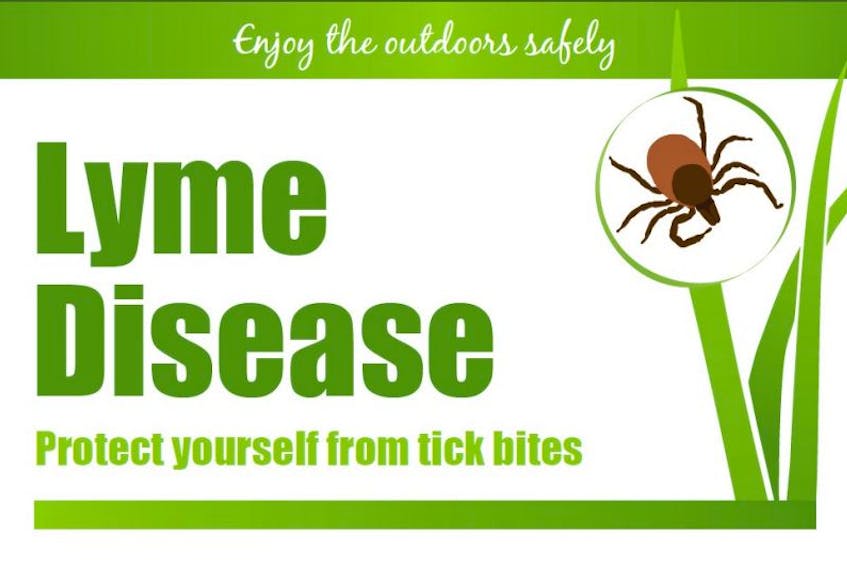If you’re out enjoying a barbecue or hike in the woods only to spot a biting bug on your leg, you’ll have good reason to feel a little bit ticked off.
Black-legged ticks carrying Lyme disease are on a steady increase in Pictou County and across the province, but this nasty bacterial infection can be avoided by taking a few simple precautions when out enjoying the sunshine.
“Yes, there is Lyme disease out there, you need to be aware but it certainly shouldn’t stop us from enjoying the outdoors,” said Dr. Robert Strang, Nova Scotia’s chief medical officer of health. “It’s all about putting the issue into context.”
Ticks live in or near woods, shrubs and long grass, from where they can easily brush off or fall onto a nearby human and bite exposed skin. The insects themselves are tiny and their bites are painless, making them hard to spot.
People heading outdoors should wear light-coloured clothes and enclosed shoes with pant bottoms tucked into socks, use insect repellent containing DEET or Icaridin and cover skin as much as possible.
Once back inside, people should do tick checks within two hours of returning. People should examine the whole body, paying particular attention around the ears, behind the knees, on the neck, in the hair, the waist, between the legs and groin area and in the armpits.
Only black-legged ticks carry Lyme disease and even they need to be attached to a human for at least 36 hours before they can transmit the bacteria, Strang said.
Any attached ticks can be removed using a pair of fine-pointed tweezers to grasp its mouthparts, but not its body. It can then be slowly pulled straight out.
“Get outdoors, but do it safely,” said Strang.
For those unlucky enough to be infected with Lyme disease a ‘bull’s-eye’ rash will sometimes – but not always – appear where the tick bit them. This includes a reddish outer circle around the tick bite.
Symptoms are similar to the flu with joint aches and fever, but the disease can trigger an autoimmune disorder or cause brain damage if not treated.
If caught early, however, Lyme disease can be cured with antibiotics and people with any symptoms should see a doctor. If possible, patients should also bring the tick or ticks that bit them for testing.
Strang said that when faced with a suspected case of Lyme disease, doctors typically just “go ahead and treat.”









